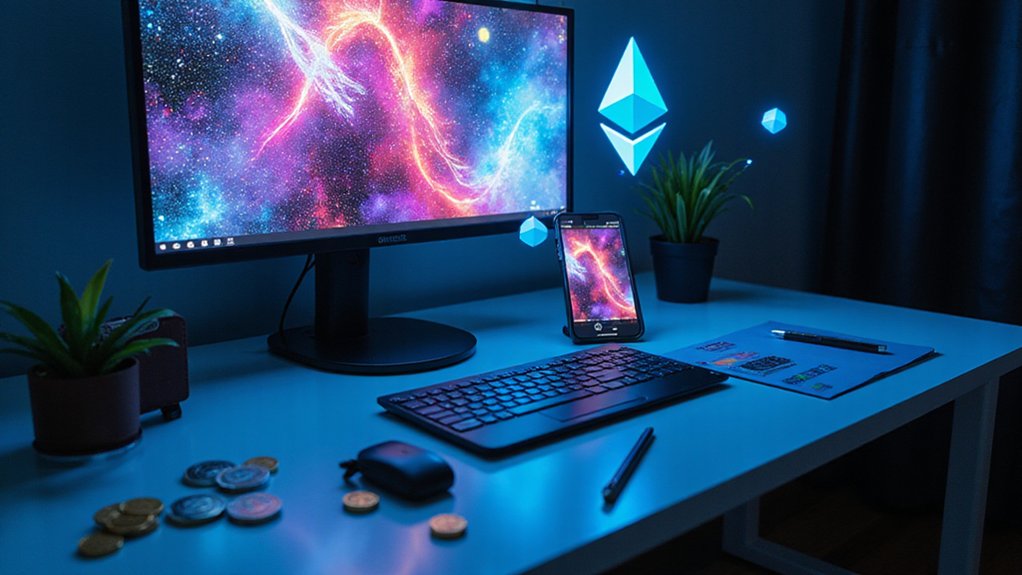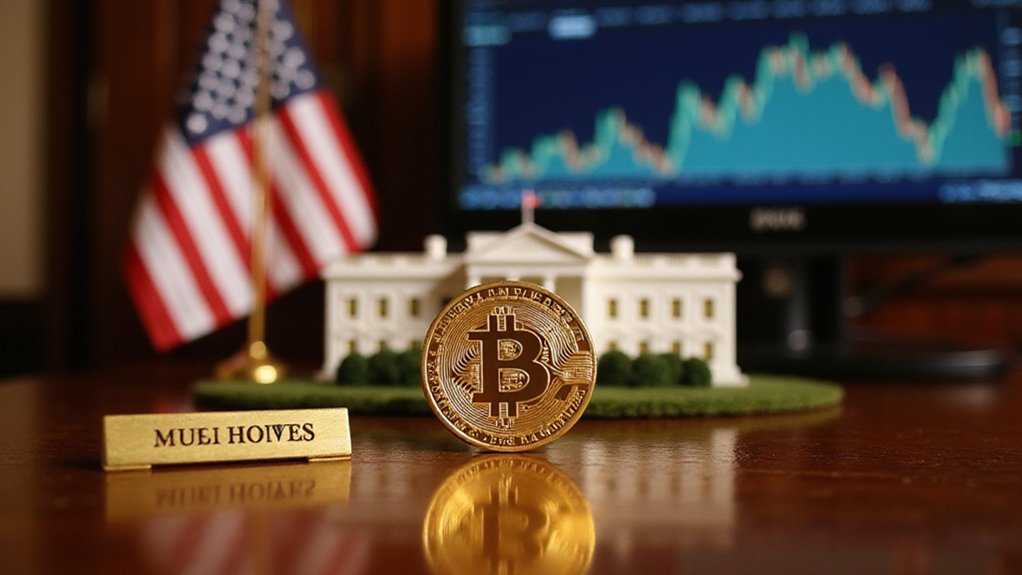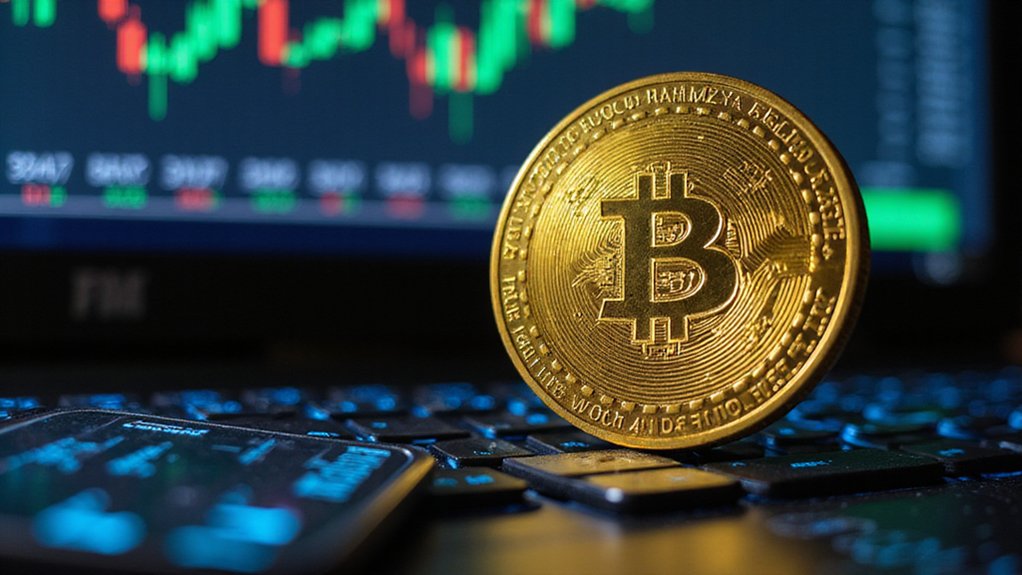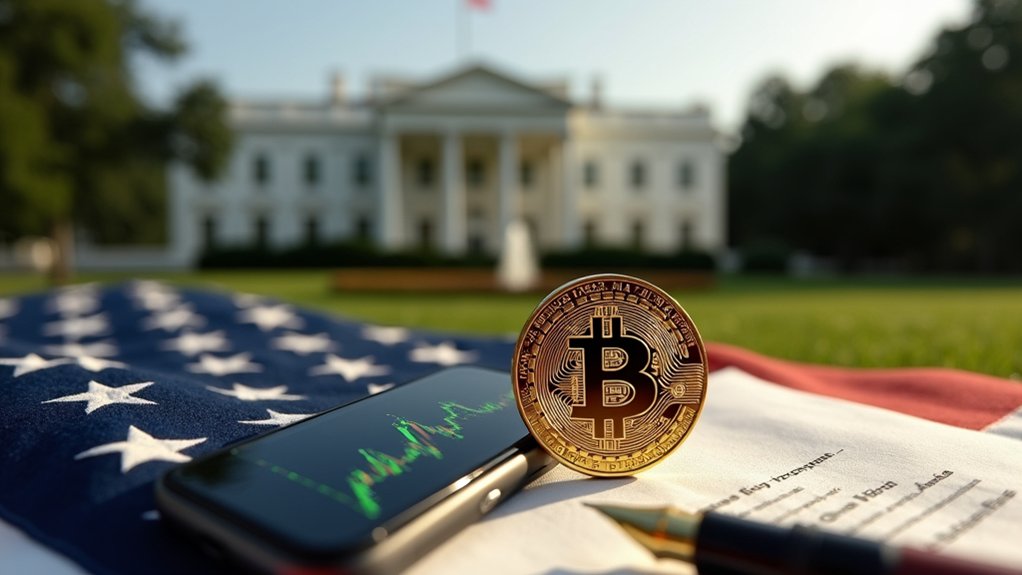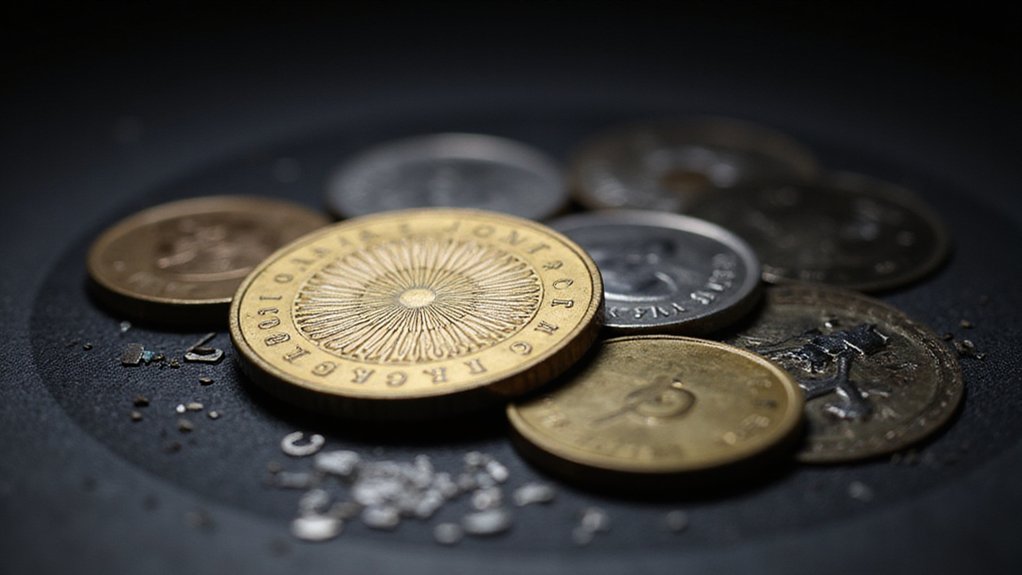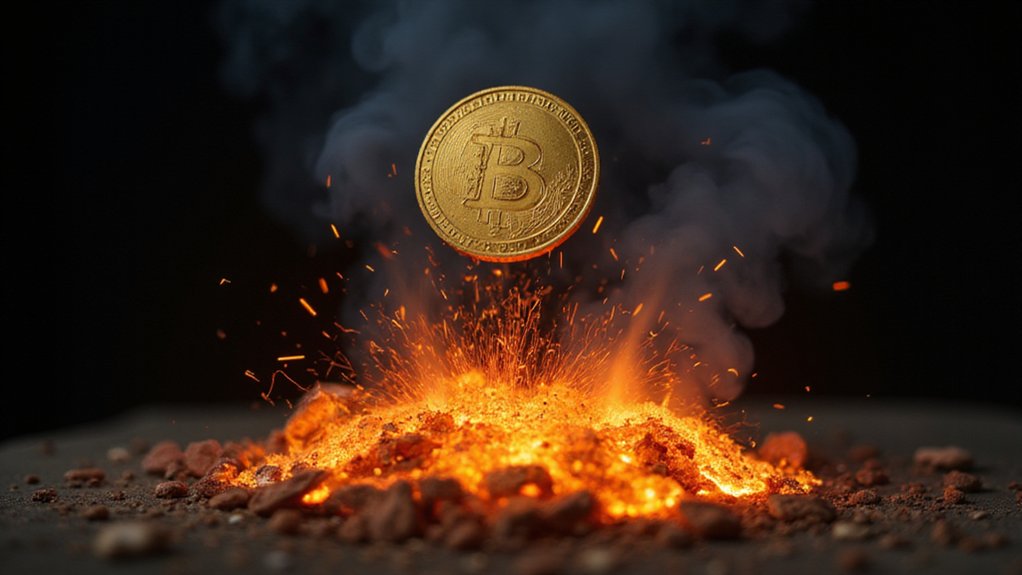Creating an NFT requires five critical steps: selecting a blockchain (Ethereum remains dominant, despite its occasionally eye-watering gas fees), setting up a digital wallet (MetaMask being the industry standard), preparing your digital asset with metadata, minting through a platform like OpenSea or Rarible, and finally listing it for sale. Each step demands attention to detail—from securing your seed phrase to verifying ownership rights—as the blockchain’s immutable nature means mistakes become permanent fixtures in your digital portfolio.
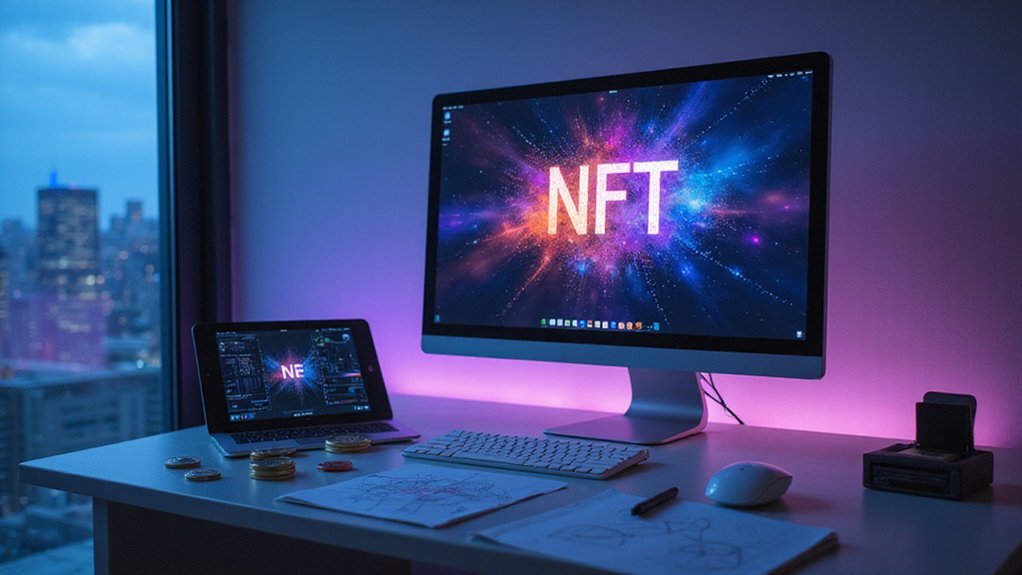
The meteoric rise of non-fungible tokens (NFTs) has transformed digital ownership, creating a paradigm where previously fungible digital assets can now possess the scarcity and uniqueness once reserved for physical collectibles.
This digital revolution—remarkable in its velocity and reach—offers creators unprecedented opportunities to monetize their work in an increasingly tokenized economy.
Selecting an appropriate blockchain forms the foundation of any NFT endeavor.
Your blockchain choice establishes the bedrock upon which your entire NFT venture will either flourish or falter.
While Ethereum remains the dominant player (despite its occasionally eye-watering gas fees), alternatives like Solana and Polygon offer compelling cost advantages.
Each blockchain presents its own matrix of security features, scalability solutions, and community support—considerations that should not be taken lightly by the prospective NFT creator.
Establishing a compatible digital wallet follows as an essential prerequisite.
Options such as MetaMask and Coinbase Wallet provide the necessary infrastructure for managing one’s digital assets and facilitating transactions.
Setting up MetaMask requires creating a secure password and safely storing your 12-word seed phrase, which acts as the master key to your wallet and all associated assets.
The prudent creator will prioritize robust security protocols; after all, what good is digital ownership if one’s private keys become public knowledge?
The selection of the digital asset itself—whether art, music, video, or another format entirely—demands careful consideration of uniqueness, quality, and market appeal.
One must verify proper ownership rights (a detail overlooked with surprising frequency in the rush to mint) before finalizing the asset for tokenization.
Metadata creation, while seemingly technical, plays a vital role in an NFT’s discoverability and functionality.
This information—title, description, attributes—must adhere to platform standards while differentiating the asset in marketplaces awash with digital offerings.
The actual minting process involves encoding the asset onto the blockchain via smart contracts—an operation requiring cryptocurrency to cover transaction costs.
Platforms like OpenSea and Rarible have streamlined this process considerably, democratizing access to what was once a technically prohibitive field.
These platforms utilize self-executing code that automatically enforces the terms of ownership without requiring intermediaries.
The process of creating an NFT through minting uses cryptographic techniques to establish the unique identity and provenance of each digital asset.
Finally, listing the NFT on an appropriate marketplace completes the journey from concept to marketable token.
The creator, now transformed into a seller in this curious digital bazaar, awaits the market’s verdict on their tokenized creation.
Frequently Asked Questions
What Taxes Apply to NFT Sales?
NFT sales incur varying tax obligations depending on holding periods and classification.
Short-term gains (held <1 year) face ordinary income rates (10-37%), while long-term gains benefit from reduced rates (up to 20%)—unless the NFT qualifies as a collectible, triggering the dreaded 28% rate.
Creators selling NFTs as part of regular business activities face ordinary income taxation.
All transactions require reporting on Form 8949 and Schedule D, with meticulous record-keeping essential for compliance (and sanity).
How Can I Protect My NFT From Being Copied?
NFT creators can protect their intellectual property through several mechanisms: leveraging copyright law and DMCA takedown notices when infringement occurs; implementing smart contracts with specific usage terms; embedding digital watermarks and metadata; utilizing blockchain’s immutable ledger for ownership verification; and maintaining vigilant marketplace monitoring.
While perfect protection remains elusive (digital assets being notoriously easy to replicate), these overlapping strategies create meaningful barriers against unauthorized copying—though one might observe that the very replicability NFTs purport to solve remains their persistent vulnerability.
Can I Sell Physical Art as an NFT?
Yes, artists can sell physical art as NFTs through three primary approaches: pairing the physical work with its digital counterpart (maintaining both simultaneously), destroying the physical piece post-digitization (creating digital scarcity), or treating the physical artwork as merely the production tool for the “final” digital asset.
Each method carries distinct implications for value proposition and collector experience, with the most successful implementations typically including clear contractual terms delineating ownership rights across both physical and digital domains.
How Do I Market My NFT Effectively?
Effective NFT marketing hinges on community cultivation—Discord engagement and whitelisting loyalists (those precious early adopters)—coupled with strategic influencer partnerships that extend beyond mere paid shilling.
The savvy marketer implements both targeted blockchain advertising and organic content strategies while engineering scarcity-driven urgency through time-limited offers and exclusive access models.
Cross-project collaborations, particularly with established collections, provide vital legitimacy in a market where perceived value often trumps intrinsic worth.
What Happens if the NFT Marketplace Shuts Down?
When NFT marketplaces shutter their digital doors, collectors face several consequential realities.
Asset accessibility becomes the immediate concern—users typically receive a grace period to withdraw NFTs to personal wallets (though some, astonishingly, miss these deadlines).
While the NFTs themselves persist on their respective blockchains, their value often plummets as liquidity evaporates.
The marketplace’s closure may also strand associated utility tokens, leaving holders with rapidly depreciating assets—a stark reminder that blockchain permanence doesn’t guarantee sustained market infrastructure.
